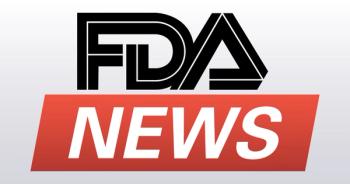What you need to know:
- FDA approves the first treatment for non-cystic fibrosis bronchiectasis, offering a new option for adolescents and adults.
- The therapy works by targeting inflammation believed to play a key role in worsening symptoms and disease flares.
- Phase 3 trial results showed fewer flare-ups and slower decline in lung function over one year of treatment.
On August 12, 2025, the FDA approved Insmed Incorporated's brensocatib (Brinsupri), a small-molecule, oral, reversible inhibitor of dipeptidyl peptidase 1 (DPP1) for adults and adolescent patients aged 12 years and older with non–cystic fibrosis bronchiectasis (NCFB), according to a press release from Insmed. With the decision from the federal agency, brensocatib becomes the first and only FDA-approved treatment for NCFB.1,2
"This FDA approval represents a potential paradigm shift in how we approach non–cystic fibrosis bronchiectasis," said Doreen Addrizzo-Harris, MD, FCCP, the Fiona and Stanley Druckenmiller Professor of Pulmonary, Critical Care and Sleep Medicine at NYU Grossman School of Medicine and Director of the NYU Langone Health Bronchiectasis and NTM Program, and ASPEN investigator.1
"For the first time, we have a treatment that directly targets neutrophilic inflammation and addresses a root cause of bronchiectasis exacerbations," said Addrizzo-Harris in a statement. "Based on the strength of the data and the impact we've seen in patients, I believe this could become the new standard in non–cystic fibrosis bronchiectasis care."
Findings from the phase 3 ASPEN study of brensocatib
The new drug application and subsequent FDA approval was based on the phase 3 ASPEN study, which featured adult patients (aged 18-85 years) who were randomly assigned 1:1:1 and adolescent patients (aged 12 to <18 years), who were randomly assigned 2:2:1 for treatment with brensocatib 10 mg, brensocatib 25 mg, or placebo once daily for 52 weeks, followed by 4 weeks off treatment. The primary efficacy analysis included data from 1680 adult patients and 41 adolescent patients.2
The study met its primary end point, as both dosage strengths of brensocatib achieved statistical and clinical significance for the reduction in the annualized rate of pulmonary exacerbations versus placebo over the 52-week treatment period.
In ASPEN, patients taking brensocatib 10 mg or 25 mg had a 21.1% and 19.4% reduction in annual rate of exacerbations, respectively, compared with placebo. Both dosage strengths of brensocatib also met several exacerbation-related secondary end points, including significantly prolonging the time to first exacerbation and significantly increasing the proportion of patients remaining exacerbation-free over the treatment period.1
Patients treated with brensocatib 25 mg also showed significantly lower lung function decline at week 52 as measured by postbronchodilator forced expiratory volume over 1 second.2
"Bronchiectasis is a chronic, progressive disease with no approved treatments, leaving hundreds of thousands of people in the US without an effective way to reduce the pulmonary exacerbations that can lead to serious consequences," said Martina Flammer, MD, MBA, chief medical officer of Insmed, at the time priority review was granted. "Brensocatib has the potential to transform the treatment landscape for bronchiectasis."
Understanding non–cystic fibrosis bronchiectasis
According to Insmed, approximately 500,000 people in the United States are diagnosed with NCFB, as millions more are estimated to be living with the disease globally. Bronchiectasis causes airways to permanently widen, making it harder to clear mucus and bacteria, leading to persistent inflammation and infection. A hallmark of bronchiectasis is frequent exacerbations, or flares, when symptoms worsen, such as coughing, increased mucus, shortness of breath, and fatigue, stated the company.1
NCFB deeply affects the lives of people living with this chronic lung condition, impacting both their physical health and emotional well-being," added Elisha Malanga, executive director of the Bronchiectasis and NTM Association. "Many patients experience frequent flares, which can disrupt daily life and potentially lead to disease progression. The FDA approval of brensocatib represents a significant and long-awaited advancement as the first approved therapy for non–cystic fibrosis bronchiectasis. Our hope is that treatments like this will enable people with bronchiectasis to manage their condition."
References:
- FDA Approves Brinsupri (brensocatib) as the first and only treatment for non-cystic fibrosis bronchiectasis, a serious, chronic lung disease. Insmed. Press release. August 12, 2025. Accessed August 12, 2025. https://investor.insmed.com/2025-08-12-FDA-Approves-BRINSUPRI-TM-brensocatib-as-the-First-and-Only-Treatment-for-Non-Cystic-Fibrosis-Bronchiectasis,-a-Serious,-Chronic-Lung-Disease
- FDA grants priority review to Insmed's brensocatib for treatment of bronchiectasis with PDUFA target action date set for August 12, 2025. Insmed. Press release. February 6, 2025. Accessed August 8, 2025. https://investor.insmed.com/2025-02-06-FDA-Grants-Priority-Review-to-Insmeds-Brensocatib-for-Treatment-of-Bronchiectasis-with-PDUFA-Target-Action-Date-Set-for-August-12,-2025










